Yamaha’s JetBlaster and Sea-Doo’s Spark Trixx Keep The Freestyle Vibe Alive
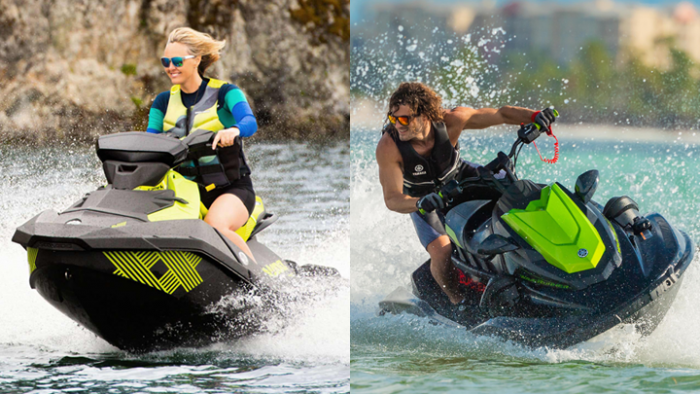
Fun Factor
Standup freestyle is incredibly fun, but today it seems like less and less riders are giving these more challenging craft their fair shot. Enter a new generation of tricksters with a shorter learning curve that require less pure athleticism but still allow the inner showman to strut his or her stuff — Yamaha’s JetBlaster and Sea-Doo’s Spark Trixx.
Same But Different
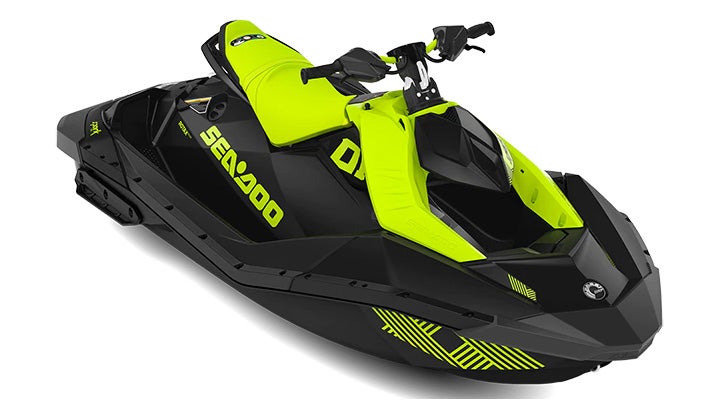
Though hailing from different manufacturers, the two craft have quite a lot in common. Both are small by today’s standards, coming in at a mere 110” in length for the two-passenger Spark Trixx and a little over 123” for the ’Blaster. Weight follows the trend, at 428 pounds for the Trixx and 549 pounds for the JetBlaster. The result is that both craft are smaller and lighter that the typical PWC, allowing riders to have a little more influence over their movements.
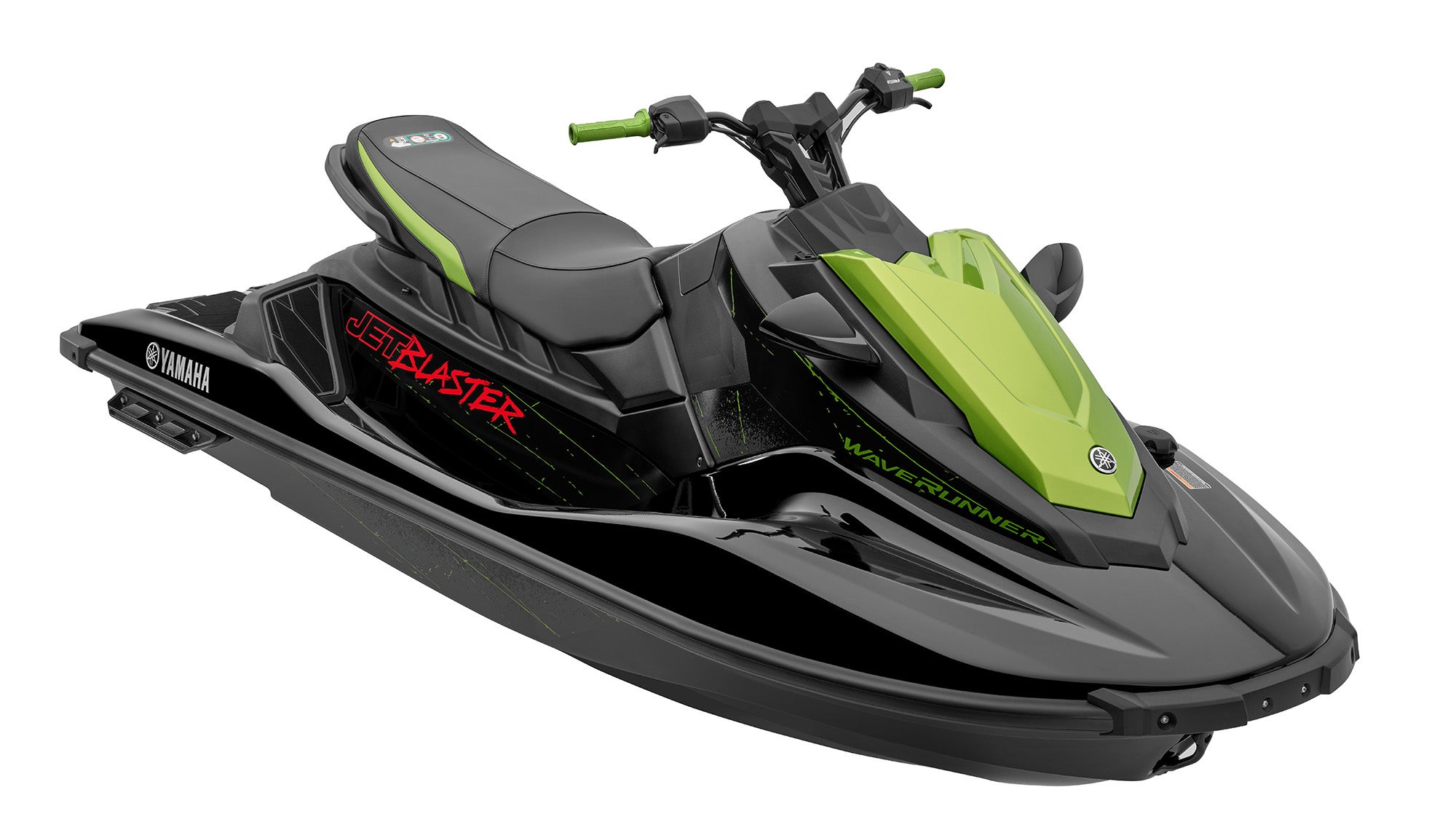
Both craft are also enhanced with a very similar trio of extras to enhance their already playful personalities.
The biggest influence on their behavior is an extended electric trim range. By allowing the directional nozzle to extend upwards beyond the norm, designers have exaggerated each craft’s mannerisms, making them that much easier to leap out of the water or break the stern free into an old-school slide or spin. The Trixx is the most exaggerated of the pair in this regard, allowing riders to literally pull the bow up into a wheelie or, with a little finesse and body English, a rotating tailspin. It’s a showy move for sure, and one that you really can’t perform on any other craft besides a standup. The larger ’Blaster is harder to pull into this attitude, but it doesn’t really try, concentrating instead on using its trim advantage to leap powerfully off waves, hop out of the water or, like the Trixx, slide and spin.
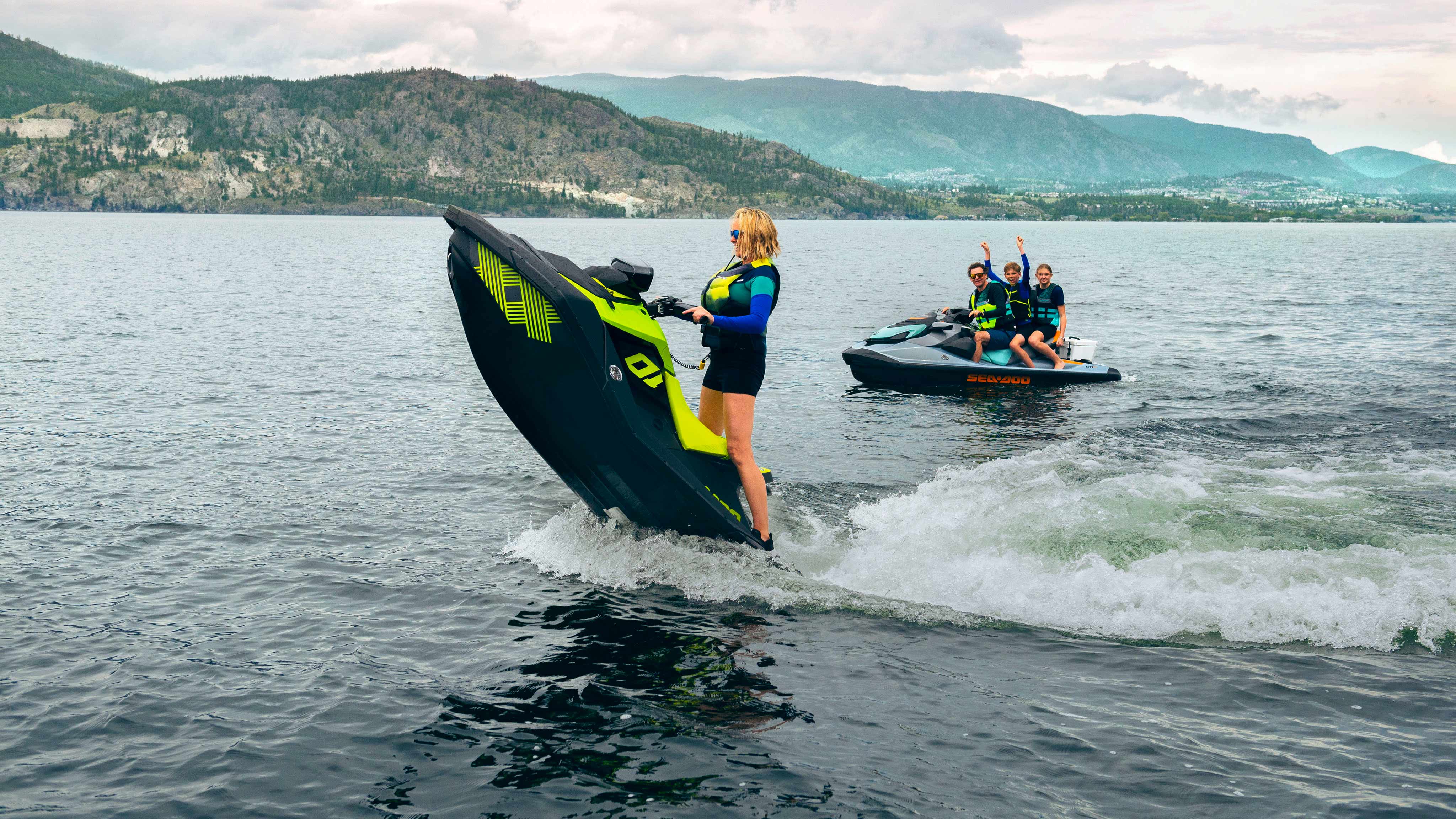
The remaining extras focus on adding leverage and traction. Both craft feature wider handlebars. The Sea-Doo’s can be extended in height several inches via a clamping mechanism, allowing riders to choose a position that matches their physical size or riding maneuvers they’re attempting. The Yamaha’s are elevated a roughly similar height but fixed. The other addition to both craft are large chocks at the back of the footwells. Use on both craft for added leverage when you’re getting far back on the craft or railing into a powerful slide. On the Sea-Doo the chocks come in particularly handy when in wheelie mode, as they give the rider a relatively horizontal surface to stand atop in addition to helping get weight ever farther over the stern.
Horsepower-to-weight ratio is a key to both craft. Again following the overall trend, the Yamaha is the more powerful craft, power by the 1,049cc TR-1 engine that cranks out 110 horsepower. Its weight is 549 pounds. The Sea-Doo features the 899cc Rotax 900 ACE, which produces 90 horsepower. The construction choices affect each craft in ways beyond performance. Yamaha’s choice of their lighter-weight NanoXcel hull material gives the boat a more rigid, fiberglass-based feel and allows for colors to be painted onto the surface. Sea-Doo’s PolyTec is a composite blend of polypropylene with fiberglass reinforcement. Color is actually molded into the material and results in a matte finish.
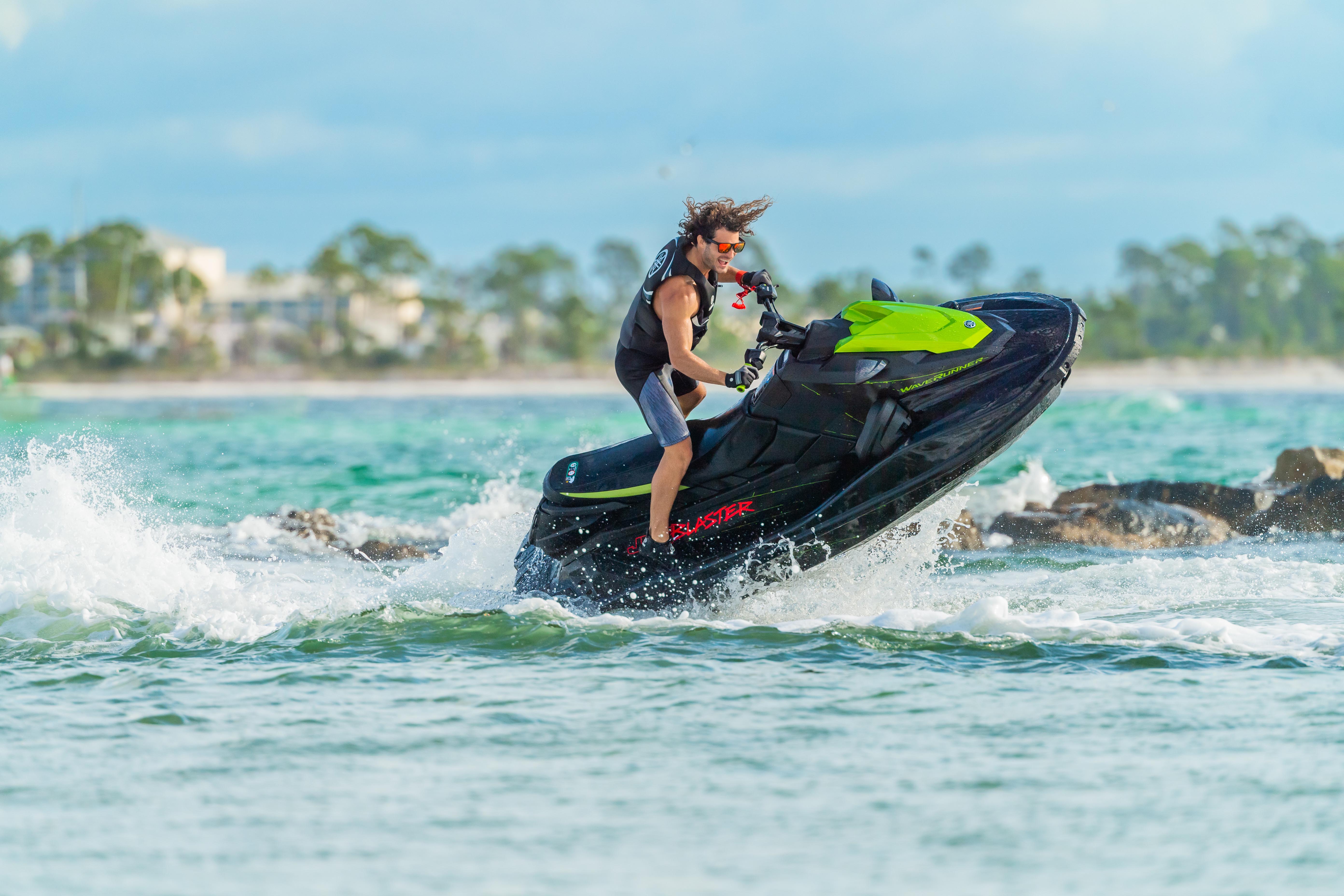
Extras? Modern attributes on both craft include electronic reverse and deceleration systems, in Sea-Doo’s case Intelligent Brake & Reverse and in Yamaha’s case RiDE. Add in the optional front storage kit and the Trixx comes in at just under $9,000. The JetBlaster lists at $10,699. Note prices are based on 2023 models. Both craft will likely carry slightly higher price tags when 2024 versions are introduced over the next month.
Personality
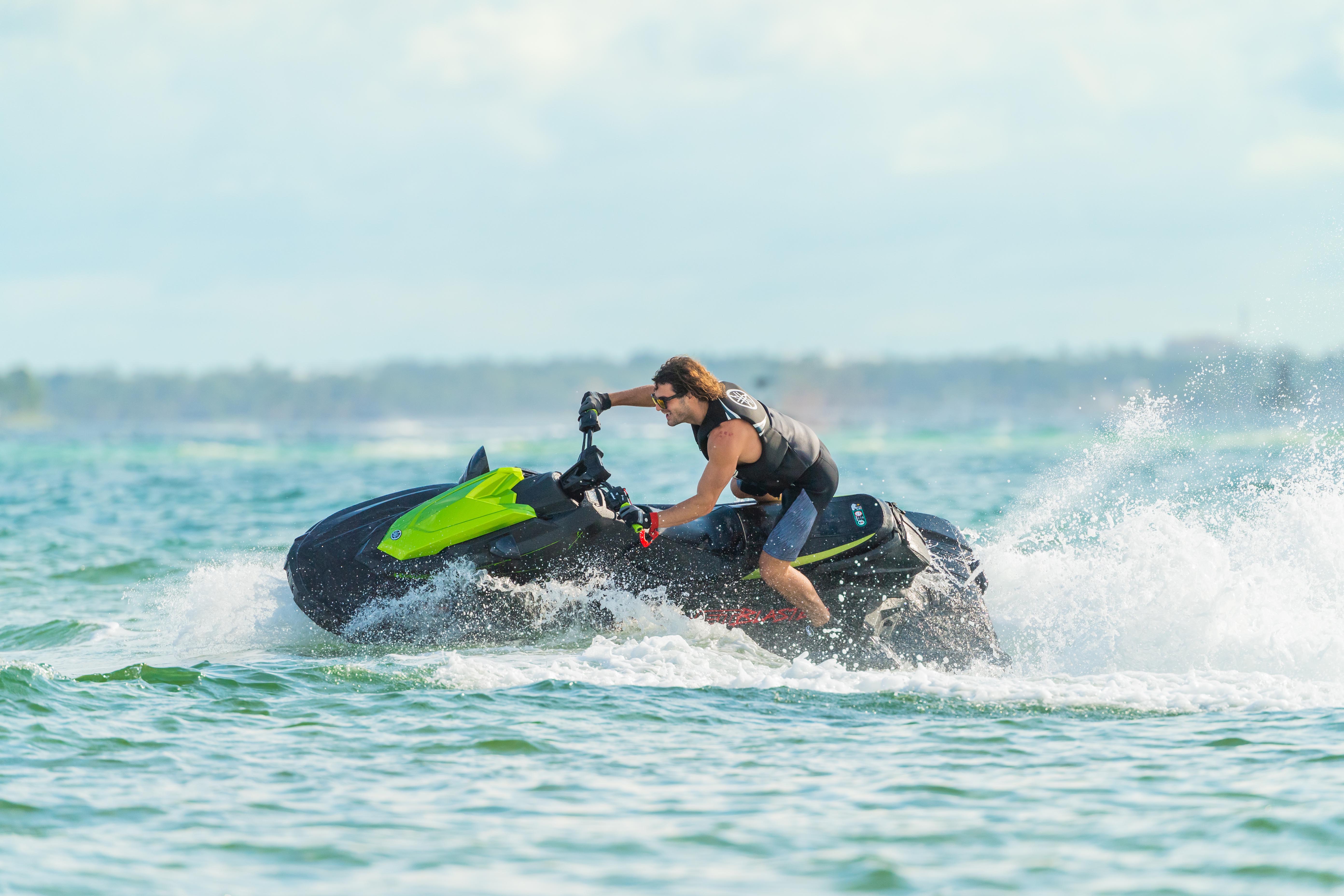
Though they get to their end results with similar methods, both craft maintain their own distinct personalities.
The Yamaha is more brute force, with the stronger acceleration of the pair, a near 55mph top speed, and a far better feel in larger, rougher waters. It powers off wakes nicely and grabs a little airtime. The Trixx is definitely looser and lighter feeling and focuses more on play than power. Given its size, it performs better in calmer waters. Top speed, as you might expect, is lower topping out at about a 50 mph max.
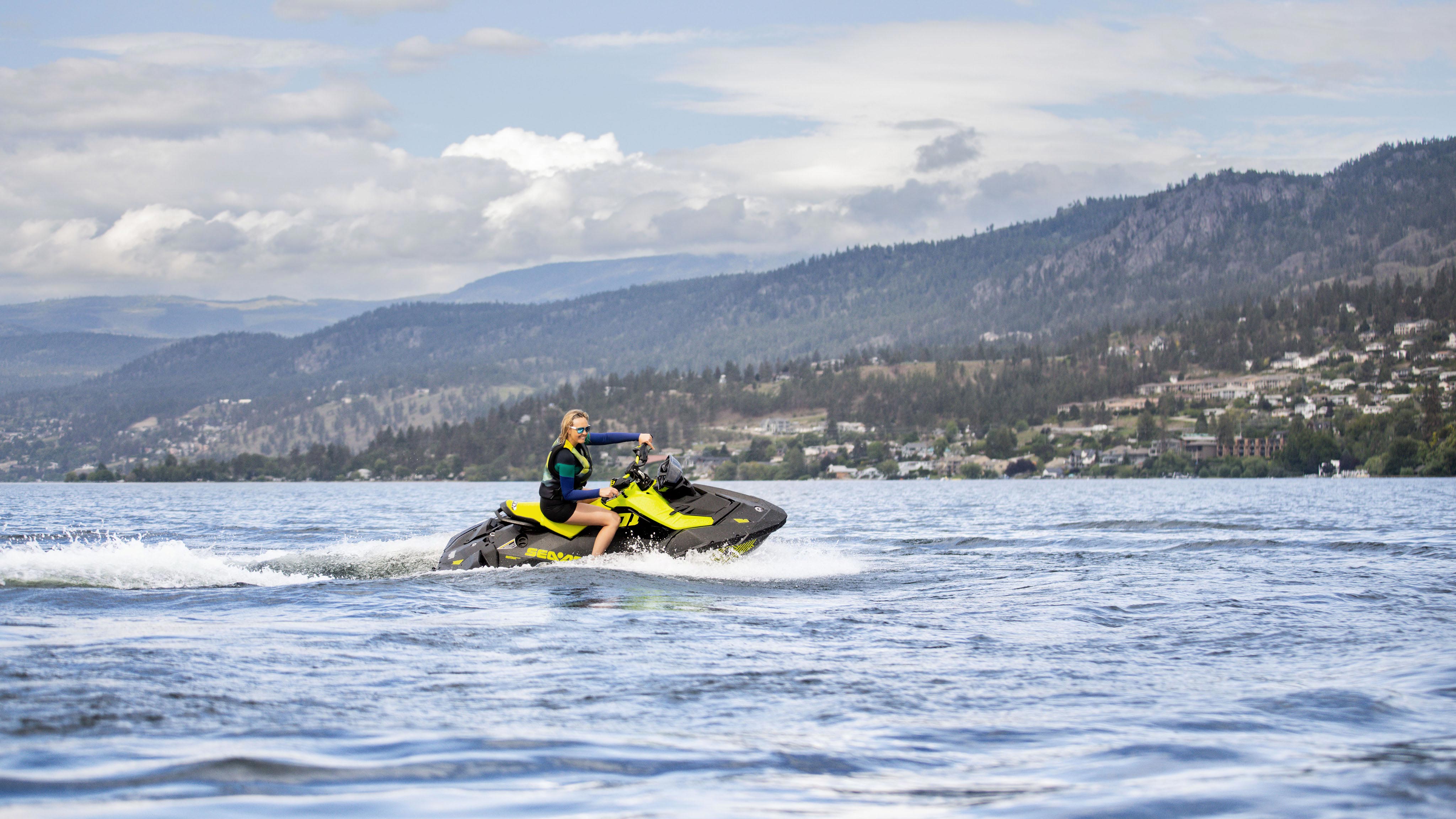
When it comes to carving, the JetBlaster (essentially the former EXR without the freestyle add-ons) is the more precise of the pair. The Trixx, like the Spark it’s based on, is one of the loosest-feeling hulls on the market. Turn to spinny play and that looseness makes the Spark the more freestyle-feeling craft, however, especially with trim angled high.
Both craft forego most bells and whistles and the plush, roomy comfort that have come to define much of the modern market in favor of pure, simple fun factor. They’re old-school playful and reward those riders that want to try and jump and spin and show off a little. In a sense, they’re the evolution of the standup, but one that can be enjoyed by a wider audience.
Our suggestion? Give them a shot…or miss out on a lot of fun.
Get PersonalWatercraft.com in your Inbox!
Like PersonalWatercraft.com on Facebook
Comments
Most Popular

2025 Yamaha JetBlaster PRO 2-Up Review

Remembering the Sea-Doo XP

2024 Kawasaki Jet Ski STX 160X Review

Whatever Happened to the Wetbike?

2025 Yamaha JetBlaster Review













 Your Privacy Choices
Your Privacy Choices